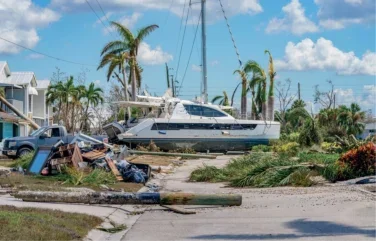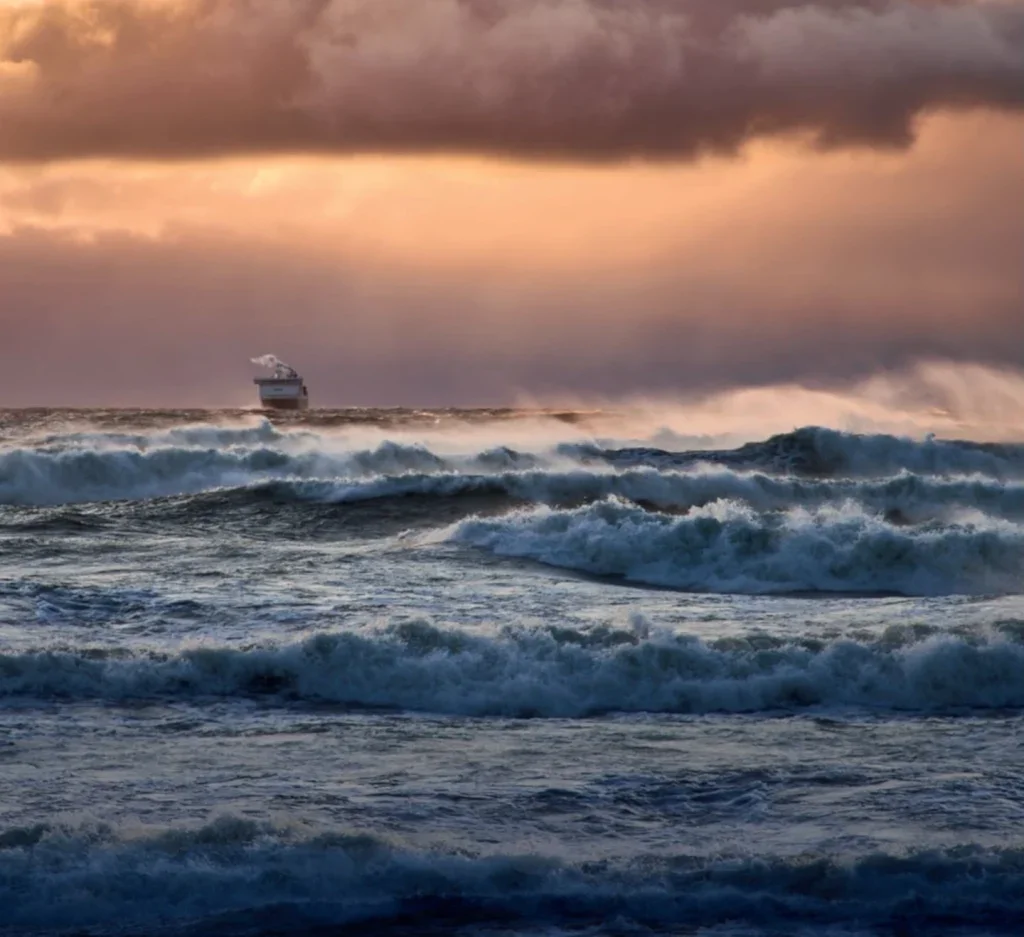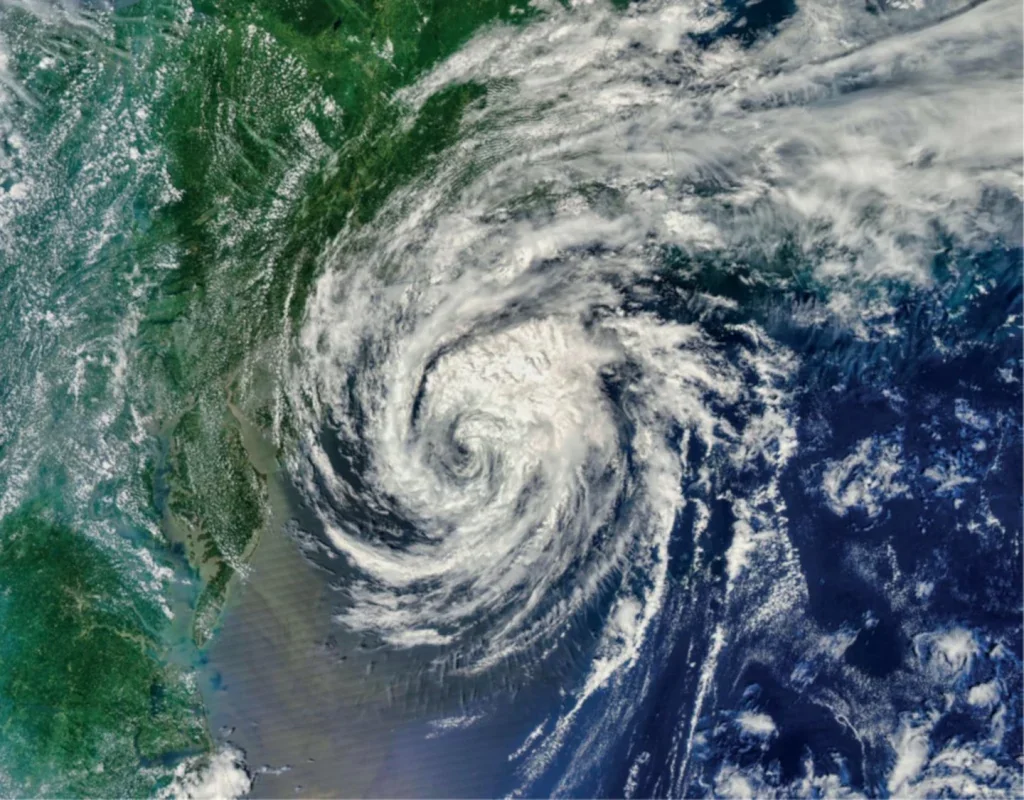
In early-July, Hurricane Beryl became the earliest Category 5 hurricane on record to hit the Atlantic. Supercharged by unusually warm sea temperatures, the storm lashed against the Caribbean and US coasts, with wind speeds of up to 265kmph and causing 11 fatalities. A big question was whether the first major hurricane of the 2024 season was simply a freak occurrence, or a harbinger of the near future.
The onset of Hurricane Beryl clashed with peak cruise season kicking into gear for the summer vacation period. Cruise lines are having to navigate intensifying weather systems and increasingly challenging weather events such as these spurred to ensure onboard safety. Carnival made the necessary decision to divert several vessels, such as Carnival Horizon and Carnival Liberty, that were scheduled to dock at ports in the Caribbean in the path of Hurricane Beryl. The storm subsequently disrupted additional liner itineraries such as the Carnival Valor and the Carnival Paradise ships.
“Our Fleet Operations Centre and shipboard teams continue to track Hurricane Beryl for possible impact to sailing operations. Safety is always our priority, and we continue to monitor forecasts with help from experts,” said the brand’s ambassador John Heald in light of the itinerary changes. Norwegian Breakaway and Norwegian Jade were also away from impacted areas by skipping stops in Honduras and Jamaica, while Royal Caribbean also altered three cruise itineraries due to the storm, with stops in the Caribbean either diverted or cancelled.
Other Caribbean-bound cruise lines have had to make similar diversions amid stormy weather. In December 2023, the MSC Meraviglia, headed to Ocean Cay in the Bahamas, had to switch destination to Canada just 24 hours before departure due to storms.
Unprecedented storm activity
2024 has already seen prolific storm action, highlighting the impact of global warming on changing weather systems that cruise lines must navigate. In May this year, the National Oceanic and Atmospheric Administration (NOAA) predicted an “above-normal” amount of named storms in the Atlantic for the hurricane season due to near-record warm ocean temperatures in the Atlantic Ocean, developing La Nina conditions in the Pacific, reduced Atlantic trade winds and less wind shear.

The Environmental Defense Fund establishes a direct link between the impacts of climate change and increased hurricanes in the Atlantic, as researchers suggest the proportion of major hurricanes (category 3 or above) in the area has doubled since 1980. The speed at which hurricanes intensify has also increased due to climate change, with Hurricanes Laura in 2020 and Dorian in 2019 as key historical examples.
Despite frequent disruption, the Caribbean remains cruising’s number one destination, frequently topping the list of tourists’ favourite spots. In 2022, the cruise market’s estimated size of $1.12bn for that year was projected to increase to $1.51bn by 2032, according to a 2022 report by Future Market Insights. That year, the Caribbean was also tipped to represent nearly 40% of the global cruise fleet deployment in 2023, with the Mediterranean as the second largest.
Rerouting cruises
Rerouting and itinerary shifts due to storms are also happening elsewhere to navigate extreme weather, such as the Mediterranean, the global cruise market’s second favourite cruise destination. In November 2023, the Saga cruise liner Spirit of Discovery was severely disrupted by stormy weather in the Bay of Biscay. Saga confirmed that approximately 100 of the 1,000 guests suffered injuries during the storm, with five needing treatment for more serious injuries. The liner received significant online backlash from passengers who believed the cruise liner had not taken the necessary safety precautions to prepare for extreme weather.
Two months prior, P&O Cruises’ Britannia ship collided with a petrol tanker due to high winds in a “weather-related incident” in Mallorca, causing it to break free of its moorings in a storm, with several individuals sustaining minor injuries.
In the wake of increasingly dramatic hurricane seasons, the cruise industry aims to tackle this issue head-on to protect itself from losses via liabilities, while protecting passengers with considered safety precautions. The additional pressure of scrutiny from social media, which enables tourists to document and broadcast a holiday experience in real time, urges the cruise industry to address perceived weather threats early and act accordingly, with clear and transparent communications. Earlier this year, passengers took to social media platforms such as TikTok to share their tempestuously-worded grievances when a Norwegian cruise liner headed for an Antarctica voyage was rerouted mid-trip. Videos of the experience shared on an account called @ruinedvacation garnered millions of views.
A balancing act
These weather events are a top concern for cruise ships, according to Royal Caribbean’s group chief meteorologist Craig Setzer, who works to ensure cruise ships’ safety from potentially dangerous weather conditions. Setzer explains his role in tracking weather events and notifying captains if their itinerary needs to change, an example of the expertise cruise liners leverage to ensure the safety and comfort of passengers. He likens the task to “slow-motion chess”, as ships and ports require succinct organising to avoid overcrowding in one port.
But experts like Setzer urge tourists not to be deterred from cruising during hurricane season, emphasising that modern vessels are built with the highest degree of safety and onboard experts are competent at navigating vessels safely.
“You’re not going to be impacted [by a hurricane] on a cruise ship because we’re getting away quickly,” Setzer assures. “The one thing that might happen is your itinerary might change.”
Intelligent design and regulations for the comfort of passengers
With cruise ships being among the most scrutinised vessels at sea, and most significantly regulated, the International Maritime Organisation (IMO) and classification societies provide stringent safety regulations throughout ship operations that ensure the safety of its crew and passengers, including ships undergoing both unannounced and announced safety inspections each year.
Cruise ships also use stabilisers, described by Setzer as “wing-shaped blades” beneath the water on the ship that help keep balance amid impact from synchronous and parametric roll, turning at an angle to counter the roll. These sophisticated systems utilise data from onboard sensors to adjust their position in real time, minimising sway, significantly reducing the likelihood of object movement and seasickness among passengers.
Vessels contain ballast tanks in the lower part of a ship to increase stability by adjusting the ship’s centre of gravity with additional water being filled into the tank. Modern ships are made of resilient materials that can withstand rough weather and seas and have watertight doors and bulkheads to prevent water from spreading in case of water ingress.

Intelligent forecasting
Accurate and dependable weather forecasting also plays a crucial role in mitigating safety risks, while providing confidence to voyagers and crews. By leveraging advanced weather forecasting equipment, cruise ships can protect passengers on board, receive real-time weather updates and make informed decisions to navigate extreme weather and rough seas.
Setzer notes his aim to establish a shift from a reactive approach to a predictive approach to weather with the help of AI. “I see AI as right on the precipice of a big jump forward in terms of numerical modelling,” said Setzer. AI systems can analyse data from weather, ocean currents and other environmental factors, helping crew to make informed decisions to plot the most efficient and safe voyages.
During adverse weather scenarios, clear and transparent communication from the crew is essential to keep passengers informed about decision-making, itinerary changes and onboard activities. “We tell guests everything that we know,” says Setzer. “And if we don’t know what’s happening, we’ll say we’re monitoring the situation.”
The effects of increasingly extreme storms and hurricane seasons on cruise ships are becoming more profound due to climate change. Adjusting or rerouting excursions is crucial to steer clear of potential risks, while offering alternative indoor activities and entertainment such as spa and fitness facilities and shopping to ensure a positive experience for passengers when outdoor activity is off-limits.
Cruise liners are having to adapt quickly with increased forecasting, intelligent design and regular safety surveillance, while offering passengers alternative entertainment such as access to indoor amenities or refunds and credits in lieu of disrupted travel. They urge passengers not to be concerned, but to prepare to be flexible, while cruise liners promise to deliver positive experiences amid ongoing disruption set to become the norm.






